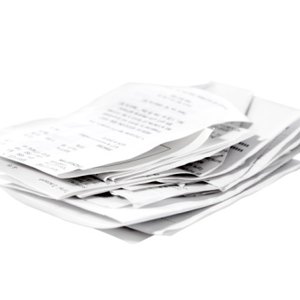
Personal items are also referred to as capital assets for federal income tax purposes. When capital assets are sold and a profit is made on the sale, the federal government requires that this sale be reported by the taxpayer on his personal income tax return, with payment of the appropriate amount of federal tax on the profit. The specific details of the sale are reported on the Internal Revenue Service's Schedule D. Taxpayers generally file their personal income taxes on IRS Form 1040.
Enter the identifying information, name and Social Security number on the top of Schedule D. This information is important in case the Schedule D is separated from your tax return. If the tax return is being filed jointly, the name and Social Security number of the primary taxpayer are the information to list.
Determine if the capital asset sold was held by the taxpayer for more than one year. If it was, the gain realized on the sale of the item is considered short term and is reported in Part I of Schedule D. If it wasn't, the sale gain realized is considered long term and is reported in Part II of Schedule D.
Record a description of the capital asset sold in Column A of Schedule D's Part I or Part II. The description should be brief. For example, if a dining room set including a table, six chairs and a buffet was sold, simply list “dining room set” in the description. Record the date acquired and date sold in Columns B and C of Part I or II.
Record the sale price of the capital asset in Column D. Record the cost basis of the capital asset in Column E. The cost basis of any item is the original cost to purchase it plus the cost of improvements minus depreciation deducted in prior years. For example, if a dining room set was sold for $5,000 that originally cost $3,000, the taxpayer would record $5,000 in Column D and $3,000 in Column E.
Subtract the cost basis in Column E from the sale price in Column D to determine the gain on the sale. Record the gain in Column F. In the example of the dining room set, the gain of $2,000 would be recorded in Column F.
Record the short-term or long-term totals for Columns D and F on lines 3 and 10, respectively. Complete lines 4 through 7 to determine the net short-term gain or loss on Schedule D. Complete lines 11 through 15 to determine the net long-term gain or loss on Schedule D. Record the total of lines 7 and 15 on page 2, line 16, of Schedule D.
Record the total gain on the sale of capital assets on line 13 of Form 1040. This is the gain that will be subject to federal tax. Complete lines 18 and 19 of Schedule D, which cover the 28 percent rate gain and Unrecaptured Section 1250 Gain, by indicating zero in each box. Check the “Yes” box for line 20.
Complete the Schedule D Tax Worksheet contained in the Schedule D Instructions to determine the tax due on the taxpayer’s adjusted income as well as the sale of the capital asset. Record this amount on line 44 of Form 1040, and determine if there is a refund due to the taxpayer of if the taxpayer owes a payment with the filing of the tax return.
Tips
With the exception of real estate, losses resulting from the sale of capital assets held for personal use are not deductible on an individual’s personal income tax return. However, a loss on the sale of a home must be reported on Schedule D even though the loss is not deductible. Losses from the sale of stock are recorded on Schedule D and can be deducted.
References
Tips
- With the exception of real estate, losses resulting from the sale of capital assets held for personal use are not deductible on an individual's personal income tax return. However, a loss on the sale of a home must be reported on Schedule D even though the loss is not deductible. Losses from the sale of stock are recorded on Schedule D and can be deducted.
Writer Bio
Jessica Kent started writing professionally in 2002. Her articles have appeared in publications including the New York State Bar Association's "Family Law Review," "Valuation Strategies" and "Metropolitan Corporate Counsel." Through her writing, she strives to assist people in making informed financial decisions. She is a Certified Public Accountant in New York. Kent holds a Bachelor of Science in accounting from Binghamton University.

